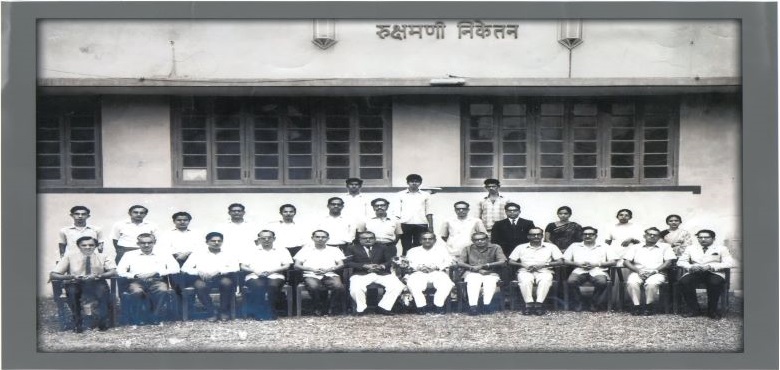University History

The Foundation Stone of VNSGU(South Gujarat University)
The need of the region comprising South Gujarat to have a separate university was voiced initially by educationists such as Atisukhshankar Trivedi who through public speeches and writings created awareness and gained support for this demand. This was immediately taken up and strongly supported by the Education societies of Surat and Navsari which already supported and managed colleges in various disciplines imparting both Undergraduate and Postgraduate education. Moreover, these were some of the most highly reputed academic centres under both the University of Bombay and the Gujarat University.
The outcome of these moves was that at a meeting of educationists and eminent citizens organized under the auspices of the Sarvajanik Education Society in Surat on July 31, 1960 a committee of 38 members was appointed to draw up guidelines and principles for the establishment of a separate university for South Gujarat. This document was submitted to the Chief Minister and Education Minister of Gujarat.
When Dr. C. D. Deshmukh, the then chairperson of the University Grants Commission, visited Surat in December 1960, the same document was submitted to him. In February 1961 a submission entitled South Gujarat University : A Tentative Phased Programmed for its Establishment and Development was handed to the Education Minister. Further, at a meeting of this committee held in August 1962 a representational committee was appointed to explain the need, feasibility and urgency of the demand for a separate university for South Gujarat to the Education Minister. This committee popularly came to be known as the Lalbhai Committee after its Chairperson Shri L. R. Desai, Vice-Chancellor of Gujarat University who continued to chair first, the Evaluation Committee of 1964 and later, the Advisory Committee appointed under Veer Narmad South Gujarat University Act, 1965.
The passing of this Act and the Saurashtra University Act was the outcome of these concerted efforts which led the Gujarat government to accept it in principle in 1964 and to set up a ten member study team to go into the question thoroughly from all angles. In addition to the many general recommendations for the efficient and effective organization of courses and administration in the new university [to cover the districts of Bharuch, Surat, Dang, valsad (including areas under foreign dominie which have or may later join this territory) ] this committee made very far-sighted recommendations for specific courses of study signally suited to the nature and development of the region. Among the course recommended were : Rural Studies, Microbiology, Forestry, Textile & Manmade Fibre Technology and Petrol Technology & Petrochemicals.
Such recommendations reveal not only academic acuity but also foresight about the directions in which the economic development of the region was to move and a sense of commitment to the geographical and occupational composition of the region under the jurisdiction of the new university.
After Veer Narmad South Gujarat University Act was passed by the end of 1965, in August 1966 the government of Gujarat appointed Shri Chandravadan Chunilal Shah as the first Vice-Chancellor and Shri Priyadatt Motiram Joshi as the first Registrar of the University. Thus the University was incorporated during the Third five-year Plan period.
A temporary office of the University started functioning on the premise of the Sarvajanik College of Education from August 18, 1966 which was moved to the Non-residential Students’ Recreation Hall of Sir K. P. Commerce College in December 1966. Around the same time, through the appointment of one office superintendent, one assistant accountant and one junior stenographer the office became fully functional. In July 1967 the office moved to the Khandwala Bungalow in Athwa Lines and it was here that the first academic departments of the University became operational during the Fourth Plan period.
The construction of buildings in the university campus started during the Fourth Plan period. The administrative office of the university and the Central library moved to the campus in 1976 while the teaching departments moved to the campus during the period 1977 to 1981.
